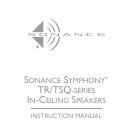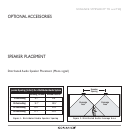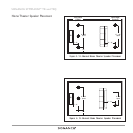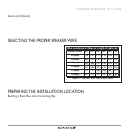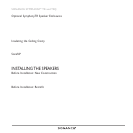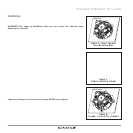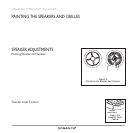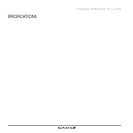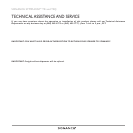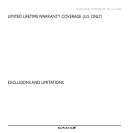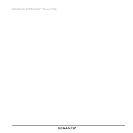
7
SONANCE SYMPHONY
®
TR and TSQ
Optional SymphonyTR Speaker Enclosures
For installations where it isn’t possible to partition the ceiling bay into a back box, installing optional SymphonyTR Acoustic Enclosures will noticeably improve
your speakers’ bass performance and power handling and will significantly reduce sound transmission into adjacent rooms and spaces . These
enclosures are made from ½”-thick MDF and are designed to be installed in new construction only.
To reduce sound transmission into adjacent rooms in installations where it isn’t possible to install a SymphonyTR Acoustic Enclosure (such as when you’re
retrofitting the speakers into an existing ceiling), you can fit the speakers with optional SymphonyTR Retrofit Enclosures (part # 92343). This enclosure is
designed specifically to be used with SymphonyTR speakers , and will noticeably reduce sound “spillover” from the rears of the speakers into adjacent rooms
and spaces.
Insulating the Ceiling Cavity
You can also reduce sound transmission to adjacent rooms and improve speaker performance by inserting a sheet of unfaced fiberglass insulation over the
back of the speaker. To reduce mechanical noise produced by unsupported drywall, install fiberglass insulation in the ceiling bays adjacent to the speaker
location.
Sonafill
®
Sonafill (part # 91928) is a retrofittable acoustical treatment system consisting of two pillows and four tiles that virtually eliminates noises produced by resonat-
ing drywall. The tiles have pressure-sensitive adhesive and are installed on the back of the dr ywall on either side of the speaker between the ceiling joists; the
pillows are then stuffed in place behind the tiles. The system dramatically improves midbass sound quality and reduces sound transmission into adjacent rooms.
INSTALLING THE SPEAKERS
Before Installation: New Construction
For installations in new construction, Sonance recommends using a Symphony FlexBracket (TR part # 92337 / TSQ part # 92344) to reserve a location
for the speaker. The FlexBracket has perforated wings that can be positioned at any angle around the bracket, and is nailed or screwed to the studs . This
serves as a guide for the dr ywaller so that the speaker hole will be in the desired location once the drywall is installed.
Before Installation: Retrofit
1. Determine the location for the speaker (see
Speaker Placement
on page 4).
2. Perform an obstruction survey to be certain that there are no studs, conduit, pipes, heating ducts or air returns in the ceiling cavity that will interfere
with the speaker.
3. The cutout for all SymphonyTR and Symphony TSQ speakers is 8
5
/
32
” (207mm). There also must be at least 5
3
/
16
” (152mm) depth within the ceiling
cavity for TR-series speakers and 4
13
/
16
” (122mm) for TSQ speakers.
4. Position the included cutout template where the speaker is to be located and pencil an outline on the ceiling.
• If you are unsure about obstructions, drill a small hole in the center of the outline and insert a coat hanger wire into the hole to feel-around for
possible obstructions.
5. Cut the mounting hole using a drywall saw, and run the speaker wires from the mounting hole to the amplifier location.
• Consult local building codes before running speaker wires through walls.



